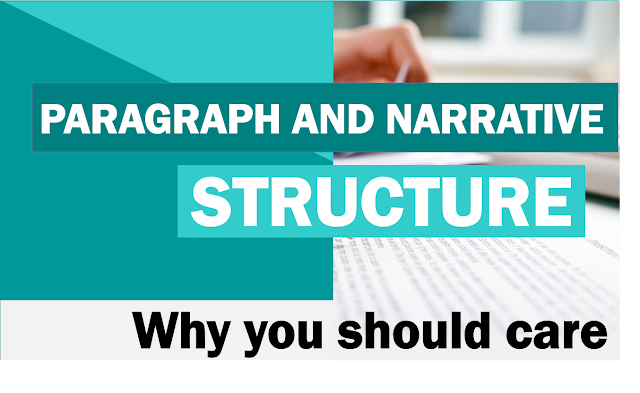Why Paragraph and Narrative Structure are Important
Poorly-written paragraphs and narrative can obscure your message
and make it difficult for the evaluator to follow your proposal’s logic and
main points. In contrast, well-written paragraphs and narratives present ideas
clearly and comprehensively, in a way that can be easily understood and scored
by the evaluator. In addition to making your proposal easier to score, strong
writing can contribute to your company’s credibility in the eyes of the
evaluator. Disjointed writing with typos and misspellings can send a subliminal
message to evaluators that your company is sloppy, disorganized, and careless.
Well-written paragraphs and well-structured narratives are more likely to give
evaluators the impression that your company is careful, methodical, and
focused, which can make evaluators more receptive to your solution.
Basic Paragraph
Structure
Individual paragraphs make up the narrative of your proposal
response and comprise the topic sentence, supporting details, and concluding
sentence. Each paragraph should focus on one main idea, which you should
introduce in the first sentence—the topic
sentence. Following the topic sentence are sentences that present points to
support the main idea—supporting
details. The paragraph should end with a concluding sentence that ties together the ideas presented in the
paragraph and transitions to the next paragraph, if one follows. I outline this
basic paragraph structure below:
Topic Sentence
- Is the first sentence
- States the main idea
Supporting Details
- Elaborate on the topic sentence
- Include facts, statistics, metrics
Concluding Sentence
- Ties together the ideas in the paragraph
- Transitions to the next paragraph, if one follows
I provide a sample paragraph below:
Basic Narrative
Structure
Basic narrative structure is similar to the basic paragraph
structure. Well-structured narrative includes an introduction paragraph that introduces the topic of the section or
subsection and identifies key points. The introduction is followed by supporting paragraphs—typically with
one major point per paragraph—that are linked together with transitional words
and phrases.
The supporting paragraphs are followed by a concluding paragraph that summarizes the key points and reiterates
the customer benefits. I outline this basic narrative structure below:
Introduction
- Introduces the topic of the section/subsection and key points
Supporting Paragraphs
- Include one major point per paragraph
- Use supporting facts, statistic, and metrics
- Link together with transitional words and phrases
Concluding Paragraph
- Summarizes the key points
- Reiterates the “so what” (i.e., customer benefits)
Final Thoughts
When we are constantly busy and in the middle of the
proposal grind, sometimes we forget to step back and remember the basics.
However, taking the time to develop well-written paragraphs organized into
well-structured narratives can provide your evaluators with much clearer and
accessible information about your solution that is easier to understand and
score. In addition to making your proposal easier to score, well-structured paragraphs
and narratives are more likely to give evaluators the impression that your
company is careful, methodical, and focused, which can make evaluators more
receptive to your solution overall. Even the best solution can be clouded by
poor writing. Take the time to present your solution clearly—it’s definitely
worth the effort in the end!
Written by Ashley (Kayes) Floro, CPP APMP
Senior Consultant and President
Proptimal Solutions, LLC
proptimalsolutions.com
LinkedIn
Senior Consultant and President
Proptimal Solutions, LLC
proptimalsolutions.com
Useful Resource






Comments
Post a Comment